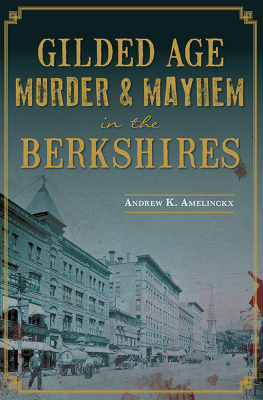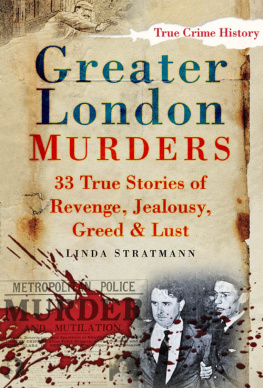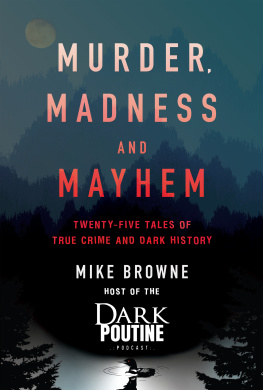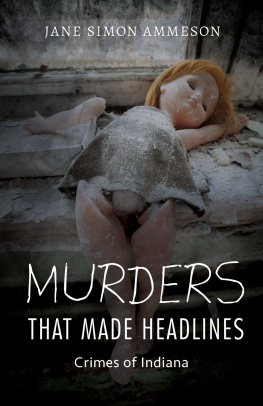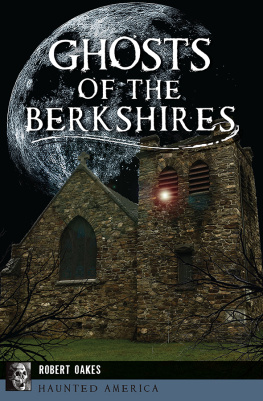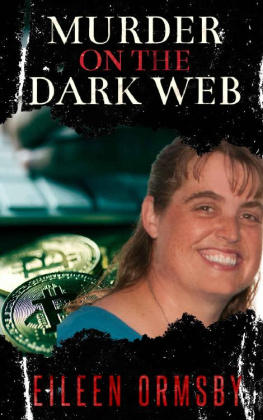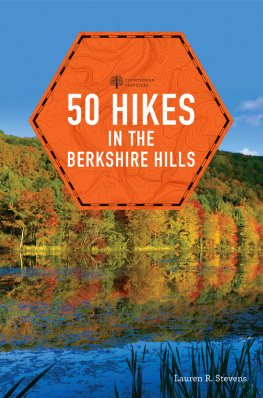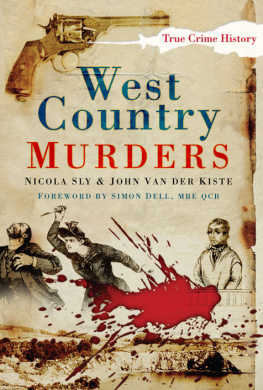

Published by The History Press
Charleston, SC 29403
www.historypress.net
Copyright 2015 by Andrew K. Amelinckx
All rights reserved
First published 2015
e-book edition 2015
ISBN 978.1.62585.305.9
Library of Congress Control Number: 2015947037
print edition ISBN 978.1.62619.798.5
Notice: The information in this book is true and complete to the best of our knowledge. It is offered without guarantee on the part of the author or The History Press. The author and The History Press disclaim all liability in connection with the use of this book.
All rights reserved. No part of this book may be reproduced or transmitted in any form whatsoever without prior written permission from the publisher except in the case of brief quotations embodied in critical articles and reviews.
CONTENTS
ACKNOWLEDGEMENTS
This book would not have been possible without the dedication, support and hard work of my wife, Kara Thurmond, who acted as ringmaster to my circus of words. Id like to thank our families, who have always been behind us and our flights of fancy. Thanks to Tabitha Dulla and the rest of the editors from The History Press for giving me this opportunity. A special thanks goes to the Berkshire Eagle for use of its images and the Berkshire Athenaeum with its wondrous collection of local lore. And I must not forget to thank the ladies (and gentleman) of the Pittsfield District Court Clerks Office who made my time as a crime reporter in the Berkshires that much better.
INTRODUCTION
The Berkshires of Massachusetts in the Gilded Age, the period that runs roughly from 1870 to the early 1900s, was an anomaly. It was a wild and wooly backwoods on the states western border as well as a playground for New York Citys wealthy elite, with a cosmopolitan flair, rich cultural history and long record of scientific innovation in industry.
Crime in the Berkshires during this time was also anomalous. Unlike today, it was the small, rural areas that saw the most lawlessness, while the larger population centersPittsfield, North Adams and Great Barringtonwere relatively quiet.
In 1893, Waldo L. Cook, who would later become the editor of the Springfield Republican newspaper, wrote an article for the American Statistical Association on murders in Massachusetts covering the years 1871 to 1892. Cook found that of the ten first- and second-degree murder convictions between 1871 and 1892 in western Massachusettsthe twenty towns that are located in the region contain only a quarter of the population that the six cities Pittsfield, North Adams, Springfield, Northampton, Chicopee and Holyoke dohad twice as many murders as the cities combined. Specifically, in Berkshire County during that period, there were five murders. They all took place in the countys small towns, including Otis, Sheffield and Washington, whose populations were in decline. The countys largest city, Pittsfield, saw no murders during that same period.
Whats interesting is that while the population of the county grew by twenty thousand people from 1870 to 1890, going from around sixty-five to eighty-five thousand, the homicide rate decreased. But (and there is always a but) when compared to the rest of the state during that period, the western counties, of which Berkshire is one, saw a bigger increase in per capita homicides than in other parts of the commonwealth. One finds certain rural counties having a decidedly stronger tendency toward the homicidal crimes than the metropolitan district, he remarked.

A scenic view of the Berkshires from the early twentieth century. Courtesy of the Library of Congress.
The term the Gilded Age was coined by Samuel Clemens, better known as Mark Twain, and Charles Dudley Warner in their satirical 1873 novel The Gilded Age: A Tale of Today, which poked fun at the eras materialism and political corruption. The term itself is evocative of the periods love of ostentatious decoration as well as the tendency to cover societys ills with an air of respectability, like a cheap piece of furniture covered by a thin veneer of gilding.
The criminal justice system was much different one hundredplus years ago, as I learned while researching the stories. For instance, anyone today who has seen a courtroom drama is familiar with opening statements in which the opposing lawyers each take turns giving their version of the facts to the jury. In Massachusetts in the nineteenth century, the prosecution would give an opening statement and then present its evidence to the all-male jury (women wouldnt be allowed to sit on a jury in Massachusetts until 1950). When the district attorneys case was finished, the defense would then give their opening statement and evidence. Other oddities included some trials where there were several judges hearing the case at once. As in todays grand jury proceedings, but unlike trials, jurors were allowed to ask questions of the witnesses. Additionally, the states attorney general personally handled capital murder cases, something unheard of in Massachusetts today.
Another interesting facet of the era was the amount of access the press had to crime scenes, the police and criminals awaiting trial. Reporters were often at the crime scene or, more accurately, in the crime scene with investigators as they looked for clues. The police often shared whatever information theyd gathered about a case with the press, and reporters prowled around the jails looking for an interview with any prisoner who caught their interest, and in most cases, without consulting their counsels, the defendants would oblige. This practice dovetails with the stark difference between a defendants rights back in the Gilded Age and today. Back in the nineteenth and early twentieth centuries, the countrys justice system was quick, often brutal, and the scales were weighed in favor of the prosecution. On the other hand, plea bargaining became a norm during this period. (In two of the stories in this book, defendants pleaded guilty to second-degree murder to avoid the death penalty.) But on the whole, defendants didnt have the same rights as they enjoy today.
During the years covered in this book, another change took place. Before 1900, executions were handled in Massachusetts by the county jails, with hanging being the preferred method. By the turn of the century, the state solidified control of the process, and deaths by the newfangled electric chair were conducted in Boston.
This book, which contains fourteen stories, is broken up into five parts: Love Gone Bad and Just Plain Greed, Lessons in Temperance, Accidents and Incidents, The Ones That Got Away and Axes and Barkers (barker being the slang expression for a gun in the nineteenth century). I wanted the book to have an older feel, and these various categories, for me, have a dime novel (called a penny dreadful in England) ring to them. Dime novel and penny dreadful were terms used in the nineteenth century to describe pulp stories that were snapped up by mostly working-class boys and young men and focused on somewhat lurid tales of criminals and detectives.
I spaced the stories out as far as the various years encompassed by the Gilded Age, so the reader will notice that the stories are not presented chronologically but rather are grouped by general theme. The final story in this book, The Trolley Car Killings, takes place in 1911, at the very end of the period. There seems to be some debate on the years encompassed by the period, but I felt it was a story that marked the end of the era and the true beginning of the twentieth century, which would see violence on a scale those in the nineteenth century couldnt have even imagined.
Next page
